After a decade of nothing but hard work, dedication and commitment to the cause, it's only right to celebrate this remarkable 10-year milestone for Wise-Sync -
To do so, Wise-Sync sits down with the man on a mission, the mind that created it all: Paul MacNeill, the visionary behind Wise-Sync and Wise-Pay; an industry-first solution for enabling an entirely automated invoice lifecycle.
Here, Paul reflects on the past decade to share lessons learned, his top business highlights, the ultimate tools and resources that helped take the company through to its recent acquisition and of course, what's coming next as he settles into his new role: General Manager of Payments at ConnectWise.
Q: First thing's first, Congratulations! Ten official years of Wise-Sync, what an incredible milestone. The company's come such a long way and of course, we have to begin with the ConnectWise acquisition - we couldn't celebrate this milestone with any greater news! How remarkable to be joining the ConnectWise family -
Paul, looking back on your journey, how would you describe the company's transformation from then until now?
Paul: I think the biggest shift has really been in the last five years since we sold the MSP business, and it really allowed us to focus growing Wise-Sync as a company of its own; before this, it was always stuck in the limelight of the MSP as a side project, so giving it that free space has really allowed the business to flourish -
Looking back over time, the reality of its real acceleration was upon starting the EOS journey; selecting the leadership team, and the trials and tribulations that go with that as well - selecting good people and not-so-good people, and being able to make those shifts and changes based around those simple principles of our values and what we do and why do it. They're all fundamental pieces of what has always provided that guiding light towards where we aim to go -
Even simple things like #BECIO (Believe, Engage, Collaborate, Innovate, Own It), where having that clarity around what our core values really were, and what our objectives were, as it all relates to the VTO and how much that has provided the direction we needed -
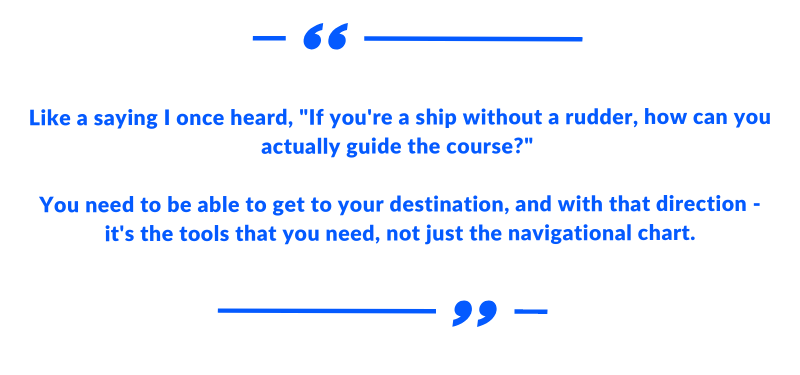
Like a saying I once heard, "If you're a ship without a rudder, how can you actually guide the course?" You need to be able to get to your destination, and with that direction - it's the tools that you need, not just the navigational chart.
So, this journey we're on now, and where we're headed... it's all really exciting!
Q: For a lot of businesses, investing in the right tools like EOS, costs money and it takes time, and for all the things you have to do from a business standpoint; the fact that you've been able to focus on your people (EOS, Officevibe) as well as your product, is noteworthy -
For those business owners out there who are perhaps reluctant or more concerned with "We don't have the time to focus on our people, we just need to drive sales," what would your business advice be to those MSPs who might not see that upfront return on investment for taking the time to invest in their people?
Paul: I think the salient point of that statement, is that you can't underestimate the value of the people in your business - and the importance of those decisions. It's an investment into the future of the business, and you can't do all of those things by yourself; that's one of the criticisms that I had of myself and that others had of me as well, was that I took on too much -
And the reality of that, is that you only take on so much that you can actually effectively delegate. So, over time, building the leadership team with great people and having great people around me as well, meant that I didn't have to worry about all the things anymore; I could delegate those responsibilities or those areas, with the outcomes that needed to be achieved and every single time, it was establishing that trust of what needed to be done could be done by those people that were empowered to do the work that they needed to do.
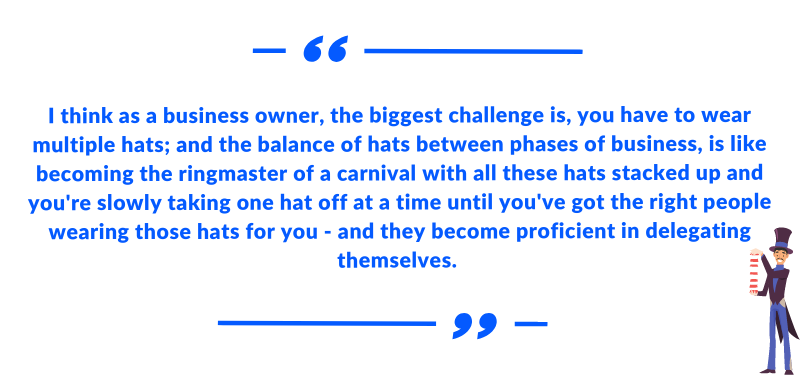
And then you've always got that feedback, that circular loop of information exchange where you know what's going on just because you've got those information channels that provide the detail back to you as part of that leadership - and of course, that management.
Q: You have a practical and distinguished knowledge of Wise-Sync and Wise-Pay, and as we've heard from innumerable partners, you've even jumped into many complex migrations or difficult situations to personally help partners -
Your passion for helping MSPs is simply unparalleled, with many customers saying "We don't even notice Wise-Sync and Wise-Pay, it all runs seamlessly in the background," but what they do notice, is the immense time and cost-savings that follow.
When you created this solution, did you imagine it would have such a phenomenal impact in the lives of these MSPs?
Paul: That's a hard one because when we first created Wise-Sync, I always thought it was going to have its own life, I always knew this is something that could go somewhere but I never realised the extent of it, until we actually got to the point where we noticed "This is going to the next level." And that was probably at about 100 customers, where I started to realise... a hundred customers isn't a small feat for a SaaS product to achieve.
You know, it's easier if you have a free trial - people can trial it and you usually have a high churn but where we had a lot of barriers for access; our barrier for access was the higher monthly fee and that had often come under a lot of criticism. Fast forward to 2018 when we had a price increase for an equivalent package, and a lot of customers didn't understand that it's still great value because it's returning a whole lot more in time and cost-savings -
And that's the strange dynamic in that situation, is that people naturally devalue software because they expect in can be delivered to the masses, whereas our product was always challenged by the size of addressable market being only a few thousand customers could use our product. At the start, there were only hundreds if not tens of customers that could use our product because no one was using cloud accounting at the time -
And that was the difference for us, was that we were forging a new category for this product innovation; and that was cloud accounting and its integration with ConnectWise Manage, which was obviously a micro-segment of a small marketplace by itself (at that time) -
.png?width=800&name=Q%26A%20with%20Paul%20%20Wise-Sync%20Turns%2010%20(1).png)
Q: Whether it's enabling a business owner like Damian Moscatt (Classic Evolutions) to achieve what he calls "banking the happiness account," with that newly acclaimed me-time to simply walk the dog and spend time with family, or allowing a business like Phoenix IT to take on a huge contract (as we know, the Super Bowl's a pretty big deal), Wise-Sync and Wise-Pay continue to play an integral role as part of that automated solution stack with ConnectWise Manage and Xero/QuickBooks Online -
When you first created this solution, did you envision that they would generate such immense results for our partners?
Paul: I'd say probably not because I thought it was going to be transformational for our own business, but I didn't realise to the extent of how transformational those changes for others would be. I come from a systems-orientated background so my business was already built around systems, so the efficiencies that we created, were really the observations of inefficient processes -
Rather than it being so drastically inefficient that you would just have people manually entering invoices into their disparate systems; to me, that would just be absurd! So, when I look at businesses that were doing that, and then they realised how much more efficient they could be by being integrated - it's Johari's window (founded by Joseph Luft and Harrington Ingham) in the context of "of the unknown, unknown," these partners often don't know that they have this problem and they're unaware of that problem in itself -
So, only once you connect them to the solution and they see the problem for themselves, do they realise how transformational it could be. It's interesting because I didn't know people were like that; that they could accept those inefficiencies in business, whereas many people actually do. And it's not until you stop and ask them to look at these inefficiencies and practically understand how to produce better outcomes, do they actually then realise how inefficient their past really was.
And that's people like our customer Kevin from A One Networks Consulting, who's shared with us that he's now saving around 40 hours a week, and that's just unbelievable! That in itself, is where you think, "Wow, how much time were they wasting before?" when all this does is move data from one point to the next but it does solve that significant problem, and I think that's something that I just would've never thought could've been the case for so many businesses.
Q: It's always astonishing to see! We have customers like Graeme from Westtek Solutions who's "allergic to pain," he's a tech-first and solution-focussed CTO where as soon as he recognizes an inefficiency, he then works to resolve this immediately -
And then on the other hand, we have customers like William Barlock, who recognised the need for Wise-Sync in his business IT Support Specialists but waited seven long years "stuck doing it the hard way" until he finally took that leap of faith and implemented Wise-Sync and Wise-Pay.
Are some MSPs addicted to working harder? Does working overtime fixing manual entry become somewhat of a routine you can't see yourself escaping?
Paul: I wonder if it's more a case of, rather than an addiction to it, the lack of foresight to see that there's a problem there - is this an issue? And only once they know it's an issue, do they know it.
So, on that case of "Well, why did it take seven years?" the pain probably wasn't enough until it became too much. And that's something to recognise, is that we help businesses to see that there's pain there when they might not even realise that they've got a rock in their shoe, where it's agonizing but it's not enough to stop and take your shoe off and get the rock out -
But if you keep walking for the next 30 miles, you're going to see that you've got a giant hole in your foot and you can't walk for the next ten weeks!
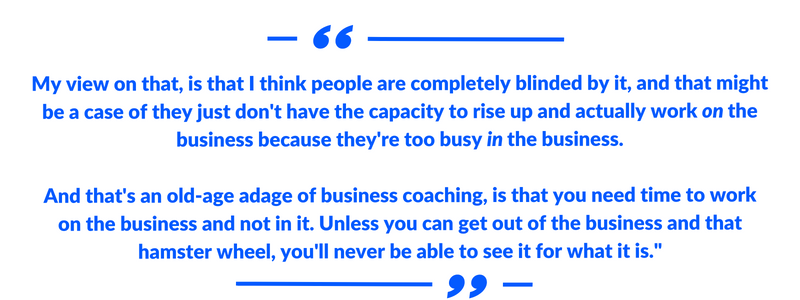
Q: On a similar note, now that we're part of the US company ConnectWise, I'm sure we'll see a lot more American customers who are still accepting checks -
Now, as the General Manager of Payments at ConnectWise, how would you comment on the future of payment processing? And perhaps in guiding those customers who are still processing checks and stuck in that stone age of payment processing, I guess we would call it...
Paul: I mean, quite literally. The concept of accepting checks in today's age is really quite crazy to think that's what people do, and even if you look at the cost of that acceptance - not only does your customer have a cost of sending that check to you because they pay to send that check as well; there's a concept of whether I'm using my banking services to send that as a fee associated with them cutting that check, or whether I'm paying for postage and the time and effort that it takes to print and sign and post and deliver that check all the way through -
Those are all opportunity costs that reduce the profitability of the business. Not only from your perspective as a company but from the customers' as well, because that's also their time that you're expending for that to be the case.
And sometimes, the education of that, is what's missing - the education of that time is valuable for everyone not just for you, where some people say "Well, I don't want to pay the small fee for a bank debit, it's penny-pinching," or whatever it might be, it really comes back to that point of the small cost of accepting an ACH credit for the automation, where the benefit for both parties should be a drastic offset against the actual cost associated with that transaction when you compare it to the true cost of mailing a check.
A lot of businesses that still do that, probably see the changes that they receive by not offering that as a service anymore, they're actually saying "We're no longer accepting paper checks, you need to pay by credit card or bank debit via ACH services in Wise-Pay," would immediately see an improvement.
And not only that, your customer satisfaction as well because it's easier for them to pay - it now takes less time, costs less money, and if there is a disconnect in that world and people don't see that as being important or they're just not willing to participate, then you do start to think, "Well, is this the right customer for me? Are we actually in alignment to that customer's needs?" And if the answer's no, then it's always about finding customers that are more closely aligned to the services you provide, and not just simply providing services to everyone because they're a paying customer but because they're actually the customers you want to do business with.
Q: Just adding to that Paul, from a business standpoint, accepting checks also means waiting for those checks to clear (and not knowing whether or not you've got the money), so you don't really have that up-to-the-minute financial visibility where you can clearly gauge your cashflow. Surely, that has to be quite worrying?
Paul: Absolutely, and even just the mistakes that occur there too - if you're billing for services that are the same each month at $29.95 for example, it's easy for checks to get allocated to the wrong invoice; it's quite simple to do - you deposit ten checks, and then someone needs to go in and allocate these checks to their correct invoices for you.
And even from a banking point of view, someone sends you money and sometimes the descriptiveness of that payment may not be enough for you to know who it came from, yet alone what invoice it's for. And then you run into issues where you've got money and you don't know whose it is, and you're then trying to rely on customers telling you "Hey, I paid you this money on this date," so you can then go and cross-check that -
.png?width=800&name=Q%26A%20with%20Paul%20%20Wise-Sync%20Turns%2010%20(4).png)
As you know, I've said many many times before - every moment that you spend from the instant an invoice is generated, is a reduction of profit because everything you do from the minute that service is completed, to the money being in your bank and allocated against the invoice, is cost. And that cost comes off the bottom line because you're not making any more money - it's already fixed.
Q: Incredible. And as you've taught all of us here at Wise-Sync, for any MSP, the two ultimate goals are to either grow to scale, or to grow to sell.
Looking back at Wise-Sync's incredible 10-year journey to now, where it's now been acquired (and you've achieved that ultimate goal), what would you consider as the most important resources and tools in driving the company to such success?
Paul: The first one would be mentors: Having great mentors that you can surround yourself with, who provide unbiased views towards your achievement. As a business owner, and as a business owner who's an individual in the context of not having business partners or investors that you report to, it's easy for your achievements to be viewed upon with those rose-colored glasses on, where you think that your performance is great but compared to your peers, it might not be. So, having a mentor to help provide that guidance surrounding how to measure and report on your own achievements, is very important.
The second thing is, being a part of peer groups. My earliest recollection of being an MSP, was being a one-man band working 20 hours a day trying to do everything because I had no one else to delegate that work to; hiring my first employee and then setting those goals, and then having someone that you could have that accountability with, who wasn't necessarily in the business, allowed you to be accountable for working on the business because that's what ultimately, was most important. It's too easy to have that 20-hour workday without recognizing what can work and what won't.
Going back to that time when I remember hearing very clearly about HTG and I had massive FOMO (Fear Of Missing Out) because you had to have at least five staff to be part of HTG, and I remember thinking "Oh man, I've only got three staff, I really want to get to five..." and you had to make $1.5 million+ or more; there was a number of things that you had to do because what they understood is that if you were under $1.5 million in revenue, you had different challenges to someone who had 5/10/30+ staff because at each phase, there's different growing pains like "How do we employ? How do we manage marketing?" How to do all of those things is different when you're under $1.5 million or when you're over that -
So I remember setting that goal, so not only having that peer group but setting the aspirations for what you want the business to look like and for me, getting into HTG was the first major organizational goal that we had because that's what I knew we needed to do. And then once we merged with another company in 2012, we went from three or four staff, to 15+ staff and hit those revenue targets, so we then qualified -
But what I learned through that process, is merging and acquisitions is not about relationships, it's about actual, real, informational discovery in the context of way back then, I went into a merger thinking I have a great relationship with the person who we were merging with; we sat down and had coffee together, had talked about our goals and aspirations, we saw great alignment so we jumped into business together thinking this was going to be great but little did I realise, that person was not the consummate operator of the business that I was led to believe. So, our business was literally at the edge of failure because we'd had different expectations of what this business would look like, and how we would transition.
When we actually realised that situation, it was only through the good fortune of having really great advisors around me, that were like "You need to pull the handbrake on this and start focusing on what's in the business rather than having your head in the clouds and blue-sky thinking, you really need to focus on operational profits and getting your business to run properly," and it wasn't until we really started to digest through the tools...
...so, that's probably number three; having the right set of tools, having the information that we could then use to actually drive the telemetry of our business.
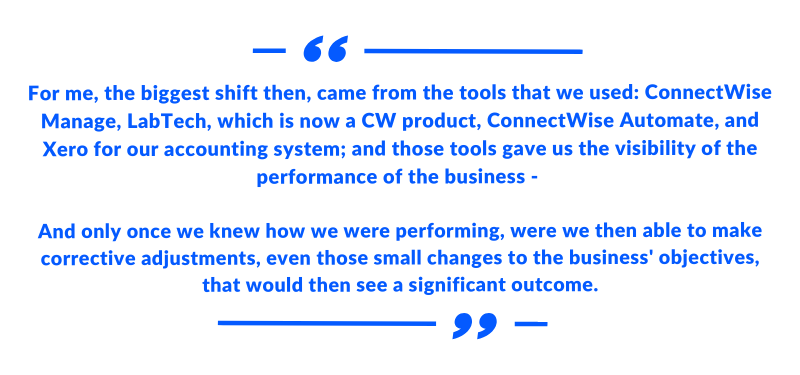
And the one statistic that I remember stood out like a brick to the head was, we had one client that consumed 96% of our service demand (so the amount of effort committed by the company) for less than 2% of revenue. So, this one customer was basically bleeding us dry of costs, which meant we were paying them for us to do the work for them, and this was a client that had been presented as one of the gold-star clients in this merger and only through those tools, did we see how incorrect that actually was -
And that's what I think is the most important part, so going back to mergers and acquisitions - that was a key strategic decision but it was misinformed by lack of visibility of that information, and only once we got it into the system did we realise how hollow it actually was, and that was a real awakening for me going into that journey together, that you can't just base things on the belief and the relationship that you might have with another company that you're going into business with together; you have to be really honest and open about performance and measurement of success, and you need to interrogate and criticize all of the information that's presented because in the end, it's better to do that now than it is to do it at a later stage when you've already committed to that; signed leases together, and done all of those things. That was a very expensive lesson, but it was also a very good lesson because it meant that I was now empowered to continue my journey in business in that way.
Q: And was that scary for you? Having sold your own MSP, was it a risk in the beginning starting Wise-Sync? We've spoken to a lot of MSP owners who felt, at one point or another, that doubt that comes with going out on your own -
Was there ever a moment in time when you considered just throwing in the towel and working for someone without all this stress and risk?
Paul: That's a good one, because I don't think anyone can really answer that except for the person in that situation. I probably could not have worked in an MSP business myself because I was a leader, I was someone who wanted to go and sell and strive. So, you sort of have this concept of - you go the hard yards to get the best results, and I think that sometimes gets lost when you've got someone who's an employee versus an owner; and there's an entrepreneurial spirit, I think, is what firmly drives behind that -
But in terms of the transition from Virage IT to Wise-Sync in 2016, that was big because I was cutting out a part of the business which previously ran inside of Virage as another business unit; it was kind of a side project, a bit of fun - we got to travel overseas and do all the things that we would do. And the people in the business loved it too because they got exposure on that world stage, but then having to sort of step in and say "Now, I have to rebuild this from scratch," was a bit daunting because all the people that I'd built the business with, that surrounded me in my leadership team in Virage, were now part of this business that had been acquired, so they went across to the new company and took new roles with that company - and here I was, trying to build a new business from scratch.
I went from being a part of a business to being a sole business owner, a sole practitioner, and that was a difficult transition as well because now I needed to go back to doing all the things again. I was like, "Ugh, I've already gotten out of this," not wanting to go back to start it again but it meant that I could then use that experience and those skills; that network that I had built, to find people that would come onboard and help grow Wise-Sync to what it is today.
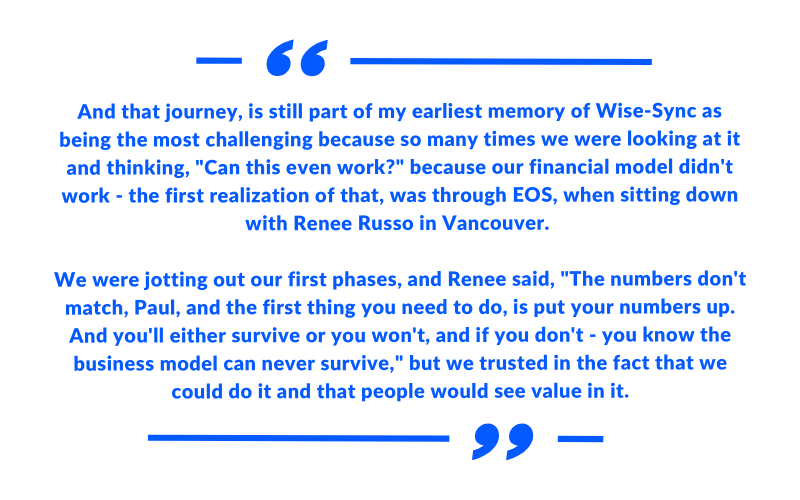
And with that invoice and payment automation that we provide and that end-to-end capability, it really matched the outcomes to the fact that even if they paid $300 a month for example, it was still a good investment, which is what the end-result was.
We still have people out there talking about how the 2018 price change is still etched in their memory, but the reality of it was, most people only incurred a small price change - the bigger clients who probably could've paid more and should've been paying more, had obviously come through to support the business and still are today.
Q: So, would you say that conversation in 2018 with Renee Russo (EOS Implementer) in Vancouver was probably the turning point for you?
Paul: Absolutely! It was a pivotal part of our business, and Renee had been part of that journey from quite early on, having known her through another Co-Director at Powernet, Dan Williams, who is also an EOS consultant and who had worked closely with that business to do their implementation as well. And I remember clearly, I was in Vancouver for an event and Dan had reached out to me and said, "You've got to meet Renee, she's so passionate!" So, we had met up in Vancouver and she was just, probably at that time, she was the first person I had spoken to about our need to hire great leadership, and she had done HR recruitment and worked for various companies, and so she explained how she could help Wise-Sync by doing those final independent interviews -
Renee was a part of that recruitment process for a number of our key hires, and that was really important because it set the stage for the people that we wanted to hire and our understanding of why they would want to work for us as well. And only through that, was the time and the opportunity that presented for her to make Wise-Sync her first customer (as she'd just become an EOS implementer at that time) but I said "You're going to have to fly out to us," and she was completely fine with that.
Though before long, she was now packed out with all these other businesses, and the flying commitments from Canada to Australia had become too much, so Renee put me in touch with Dan Davis, who I had worked with previously at PowerNet and had a lot of respect for, and I remember giving him a call and explaining to him this situation not long before asking "Who do you think would work for us?" and he immediately replied, "Paul, I would love to be your implementer, I'd love to see you go to the next level - you're the kind of person that I'd want to work with. My calendar's booked out for three years in advance, but if you're happy to work around one of my other clients in Mildura who I fly out to, then I can work with Wise-Sync before or after depending on what timeslots there are." And that's how we started out with Dan Davis!
Over time, Dan's calendar availability had actually become available and we were able to slide into other times. When COVID hit, we went remote but being able to work with one of the best EOS implementers in the world, and him seeing us go from strength to strength, to me, was recognition of that starting point - the first step we took in the direction of EOS was the moment that our success really began.
Q: Amazing, and Paul, would you say that along that journey with Dan Davis, you had finally established the right leadership team?
Paul: Absolutely! And Dan also helped to see where people weren't the right leaders as well; we even had some people move through the different phases of leadership where they've been good for the time, but the time to change had then become apparent, and the people who had been through that journey, we were honest and open with at that time, and it became a matter of "I think, it's time now that we change," and those people had said, "Yes, I've run the course and I'm at the end of what I can offer."
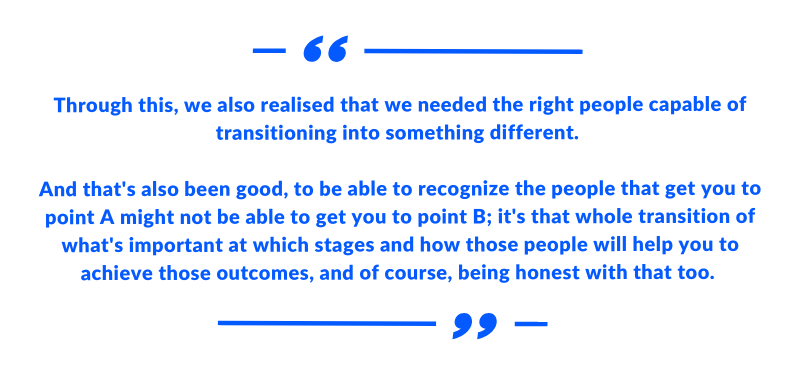
Q: As everyone knows, Paul, you're an entrepreneur at heart. You're consistently focussed on driving the team to achieve such a BHAG (Big Hairy Audacious Goal) and irrespective of this acquisition and this merger which is incredible, I know each and every person in the team has always kept our BHAG firmly in mind.
Now that we have the resources and the backing in ConnectWise to get there, what are your very own driving factors for emanating such confidence in the future of Wise-Sync and Wise-Pay?
Because it's not everyday that you meet a business owner like yourself who sees the vision no matter how far out that might be and each day, you're keeping the team steadfast in the pursuit of that vision - that's truly amazing, it's almost like a Tony Robbins' influence!
I don't know if you ever thought about yourself in this way, but it's phenomenal to have that influence; this was even before we were acquired, you've always had this resilience and you've always believed that we could get to that ultimate goal by 2029!
Paul: Yep! And I think it does resonate very much from that; is that, you've got to change your mindset to achieve your outcomes - if you believe you can do it, you will do it! That's the whole philosophy that sits behind everything and what we've really set our mind to, it's a matter of "Well, we're the ones who decide whether we get there, how we get there and what we need to do, it's up to us."
And very much so, if I look back at a time in memoriam, these have been those defining moments - not accepting mediocrity, and not accepting the fact that you have to do the things that society says or otherwise; it's the fact that you decide your future, and you take control of it - that's up to you, no one else can keep you down.
It's worth adding, I'm actually a Tony Robbins' alumni. His events all formed part of a real definitive moment in my life where I took the plunge and started my own business at 23 years old, with my then 19-year-old girlfriend Jacquie (who's now my wife and the mother of our three beautiful daughters) by my side. Honestly, if you can walk over hot coals at a Tony Robbins' 'Unleash the Power Within' event, nothing can stop you!
.gif?width=800&name=Q%26A%20with%20Paul%20%20Wise-Sync%20Turns%2010%20(1).gif)
Q: Extraordinary. Looking back Paul, is there anything you would've done differently?
Paul: Ooft! There are a lot of things that I would've done differently in business; hiring the right people, not hiring the wrong people... but then again, they're all times of learning, like even if I look at my experiences through M&A, I remember saying at one time that doing that merger in 2012, which nearly killed us, also created the biggest character-building experience that resulted in our success. So, without trial and tribulation, you can't have success. You must have failure to learn and to achieve; you can't just expect everything to always work and that to me is the part where I think, being willing to accept failure as to what it is, it's all a learning experience for future success -
And where we are today, is a result of those learnings, and if I look back and ask "Well, what would I do differently?" There's only things that may have or may not have been opportunistic at the time, like could I have looked for investors early on to accelerate our growth and to get further down the pathway of where we are; that might have changed the outcome, that might have moved us outside of the opportunity that we're in today maybe because we would've been too focussed on other markets, and ConnectWise could've been completely unaware that we were moving down a different pathway.
Whereas, we've embedded today at the right time for us and for ConnectWise, to achieve maximum velocity of what we can bring to the table. Now, it's about achieving that outcome and using ConnectWise's leverage in the market to actually catapult the business' performance and success - and if I look at what we could do, and what we will do; they need us to x10 our revenue but the reality of that is, we're probably going to go well beyond that because with the actual capacity we have now, it compounds in growth anyway, so we go from having access to 1,000 customers at best (if we're lucky), to having the disposal of the entire ConnectWise ecosystem at our fingertips - and the opportunity to deal with finding solutions for, and to improve our product, using only the best-of-breed technology solutions that are available today -
That's the sort of stuff you can't buy access to. It's not a pay to play situation, it's very much now about the opportunity that we are now in real presence of.
Q: If you could build a time machine, what are the top three business highlights that you'd travel back in time to relive?
Paul: The first, would definitely be winning the awards that we won; the CRN Fast50 and the Impact Award (Exporting Innovation), where we were publicly recognised for our innovation and growth.
The second, would be the sale of the business (Virage IT), which was also a huge highlight that had a big positive outcome.
And then I think the third one would be, this most recent process that we went through with ConnectWise; this acquisition was an enormous undertaking! At times it almost felt like a David and Goliath battle with 15 to 1 on a Zoom call, it was like me and then fifteen other squares; and you're trying to present for more than what you are, but making sure that people truly understand what the value of this company is beyond just the person that's sitting in front of them, and obviously here, having a great leadership team around me, is key to that - 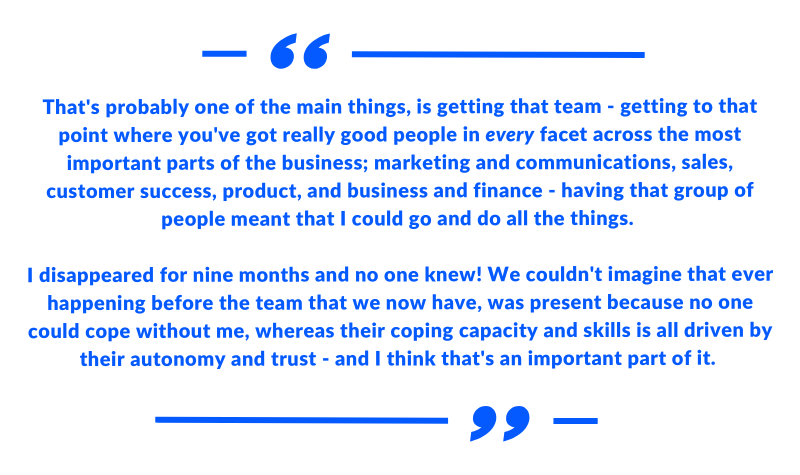
Q: Any final words, Paul, on Wise-Sync officially turning 10?
Paul: I think, just the recognition that in ten years, you really can accelerate the growth of a business!
For anyone out there that's wondering whether or not they can do it - it was just hard work and consistent commitment to the journey ahead!
Attain cutting-edge insights and learn how to shape your business for long-term sync-cess.